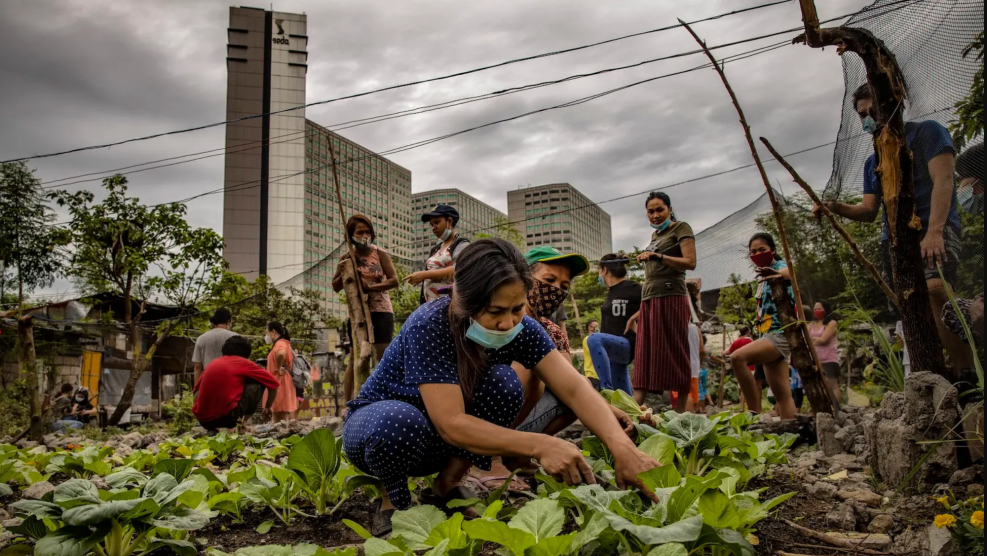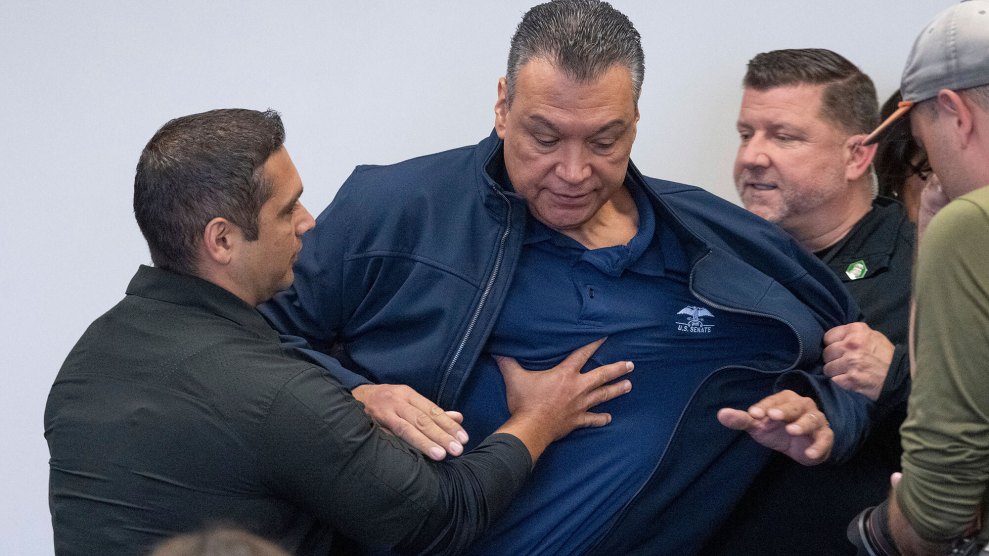In southeastern Colorado, about 130 miles from Pueblo, there is a small town called Chivington. Once, it had railroad shops and saloons and as many as 1,500 residents. There was even an East Chivington. But then the railroad shops moved away, taking the people with them, and all that remains of Chivington today is a Friends Church and the ruins of a brick schoolhouse, its roof caved in, its rafters collapsed upon each other like the ambitions of this civic corpse.
Chivington is named after a man who turned from the ministry to the military and made a reputation for himself fit only for a ghost town. The first time Colonel John M. Chivington came through the region he was at the head of some 725 men, members of the 3rd and 1st regiments of the Colorado Cavalry. It was early morning, well before daylight, and the date was November 29, 1864. He passed that way a second time two days later, on his way back southward to Fort Lyon and thence to Denver, where he received a hero’s welcome. In the interval, Chivington and his men had ridden down at daybreak upon a village of 500 or 600 Cheyennes and Arapahos camped a few miles north of present-day Chivington on Sand Creek. There, the Colorado troops — most of them volunteers commissioned for a 100-day term of service — murdered between 125 and 160 Indians, mostly women, children, and the elderly. Black Kettle, the chief of one of the Cheyenne clans, had met with Chivington and other military leaders at Camp Weld in Denver in late September, and he believed that his village was at peace with the whites. At the sight of the troops riding toward him, Black Kettle raised a large American flag and a white flag on a lodge pole and stood holding it aloft. When the troops began firing, he fled.
The attack rolled northward from a sharp bend in Sand Creek, and when the shooting was over, Chivington’s men returned to the Indian village to mutilate the bodies of the dead and burn their lodges and, almost incidentally, to murder a half-breed prisoner named Jack Smith. Nearly four years later, General William T. Sherman, passing through, stopped at Sand Creek to collect relics. One of his men later wrote, “We found many things, such as Indian baby skulls; many skulls of men and women; arrows, some perfect, many broken; spears, scalps, knives, cooking utensils and many other things too numerous to mention. We laid over one day and collected nearly a wagon load.”
Two of the Cheyennes killed at Sand Creek, War Bonnet and Standing in the Water, had visited Washington the year before and were photographed in the White House conservatory. They had been given a short course in geography and addressed by President Lincoln. “It is the object of this Government to be on terms of peace with you, and with all our red brethren,” Lincoln said. “We make treaties with you, and will try to observe them; and if our children should sometimes behave badly, and violate these treaties, it is against our wish.”
Lincoln’s words must be contrasted with those of a proclamation issued on August 11, 1864, by the territorial governor of Colorado, John Evans. Evans authorized “all citizens of Colorado, either individually, or in such parties as they may organize, to go in pursuit of all hostile Indians on the plains, scrupulously avoiding those who have responded to my call to rendezvous at the points indicated; also, to kill and destroy as enemies of the country, wherever they may be found, all such hostile Indians.”
Almost 136 years to the day after that proclamation was issued and Colorado volunteers began to form their 100-day militia, I stood on a sand bluff overlooking the site of the Sand Creek Massacre. It is now private property, but legislation has been introduced in Congress by Senator Ben Nighthorse Campbell, who is a Northern Cheyenne, to create a Sand Creek Massacre National Historic Site here.
This is the kind of place, common in the rural West, where you might almost believe that nothing has changed since the event that made it memorable. There are a thousand — ten thousand — shallow washes like it on the high plains: a grassy flood zone, now thickly shaded with cottonwoods, the waters of Sand Creek nearly always in abeyance, except for pools here and there grown round with rushes where cattle stand flank-deep on hot days. Sand Creek flows to the southeast, but just below the massacre site it makes a long eastward bend before turning south again. On a plain near the crook of that bend and to the north of it, Black Kettle’s village had stood, 100 and more buffalo-skin lodges, pony herds grazing on the high ground above the village. Now, in August, the shrill sound of grasshoppers rang out across the undulating flatland beyond Sand Creek. In November, they would have been silent.
It’s always an illusion to believe that you can see the past unchanged. In the mid-1970s, a gas company ran a pipeline right through Sand Creek, just above the bend. The 1864 soil level is buried under some 10 inches of new soil that has drifted in over the years. In 1887, a town called New Chicago lived for a grasshopper’s lifetime just beyond the massacre site, sustained only by the hopes of a railroad coming through someday. Around 1910, local citizens formed the Chivington Canal Company and dug a canal that angles toward Brandon, a small town just east of Chivington. You can still see the line of the canal where it edges the massacre site. For several years, a farmer tried to raise a crop in the creek bend. New Chicago failed. The canal failed. The crop failed.
And over time, a clear sense of the location of Black Kettle’s village had eroded as well. Relics of the kind that General Sherman found in abundance on the surface at Sand Creek had long since disappeared. An inconclusive archaeological study was conducted in 1997 by the state of Colorado. In 1999, the National Park Service — conducting an archaeological reconnaissance with local land-owners and tribal representatives from the Northern and Southern Cheyennes and Northern and Southern Arapahos — rediscovered the village site, though there is still some dissent about its actual extent.
In 1950, local citizens placed a stone monument to the massacre on the sand bluff where I stood, a bluff that allows a view of much of the land that would be included in the Sand Creek Massacre historic site. The monument reads “Sand Creek Battle Ground Nov. 29 & 30. 1864,” and it shows the head of a generic Indian in profile, looking almost like Liberty in her Indian headdress on the old copper cent, which could have been found in the pockets of Chivington’s cavalry. People used to drive to this monument to park and drink and smoke dope and dump their trash and ferret out relics until Bill Dawson, the owner of much of the massacre site and the land that the monument sits upon, closed the access road, partly to stop an unruly traffic but also out of respect for the wishes of the Cheyennes and Arapahos, to whom this site is sacred.
I tried to imagine the running slaughter — it was never really a battle — that began in the slow light of late November, the pony herds cut off, the melee among the lodges, the sullen mutilation that began later that day and continued during the night and into the following day, the scalps flayed from the dead, the breasts cut from women and the scrotums from men to be used as tobacco bags, all attested by witnesses who appeared before military and congressional investigations of Sand Creek in 1865. But the day I stood there, it was too peaceful a place to sustain such memories, and besides, those are memories that belong to the descendants of the people who camped there long ago. The night of November 29, 1864, wrote George Bent, a mixed-blood Cheyenne who survived the attack, “will never be forgotten as long as any of us who went through it are alive.” It still lives, vividly, among the Cheyenne and Arapaho.
But before the running slaughter began, there had been a running argument, and that was much easier to imagine. Chivington did not ride down upon a peaceful village in hot blood. Nor did he attack peaceable Cheyennes in ignorance. He had just run for office and lost on a ticket that would have admitted Colorado to statehood. No sooner was the election over than Chivington began laying out his campaign against Black Kettle’s village.
Political ambition and intractable moral ferocity drove Chivington, that and a panic caused by Confederate raids in southeastern Colorado and by the murder of the Hungate family — father, mother, and two young children — near Denver by four Arapahos. Two weeks after the Hungate murders, Governor Evans directed “all friendly Indians of the Plains” to separate themselves from hostile Indians and to rendezvous at assigned places of safety. It was precisely such a friendly village, camped in accordance with Evans’ directive, that Chivington planned to attack.
He was forcefully confronted at every stage by men who opposed his plan because it meant betraying Black Kettle and the assurances of peace that had been made in council in late September. Though he rode with Chivington, Captain Silas Soule refused to take part in the killing, and he testified against Chivington during the military investigation of Sand Creek in early 1865, an act for which he was shot down on the streets of Denver by a Chivington supporter. The night before the massacre, Lieutenant Joseph Cramer told Chivington that the raid he was planning was murder and a violation of their word as officers and men. “Colonel Chivington’s reply,” Cramer wrote, “was, that he believed it to be right or honorable to use any means under God’s heaven to kill Indians that would kill women and children, and ‘damn any man that was in sympathy with Indians.'” Again that evening Chivington was confronted by a group of officers and civilians, and again he damned their sympathy. Then he ordered his men to mount and ride northward through the night to Sand Creek.
Chivington had decided upon war and upon the deaths of the Cheyennes and Arapahos who favored peace. In the aftermath of Sand Creek, a man named J.W. Wright, outraged at Chivington’s actions, neatly summed up the purpose of the massacre in an open letter. “An Indian war is on the country,” he wrote. “Every effort has been made for two years to produce it.” That war erupted on the Plains the following year. It took Chivington and Sand Creek to make it happen, to set in motion the machinery that would eventually kill Black Kettle, still seeking peace four years later, at Washita, in what is now Oklahoma. There, at dawn, George Armstrong Custer rode down upon Black Kettle’s village again, employing Chivington’s brutal tactics and his unswerving convictions.
















